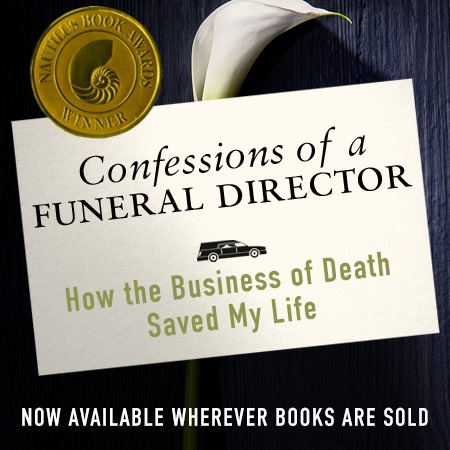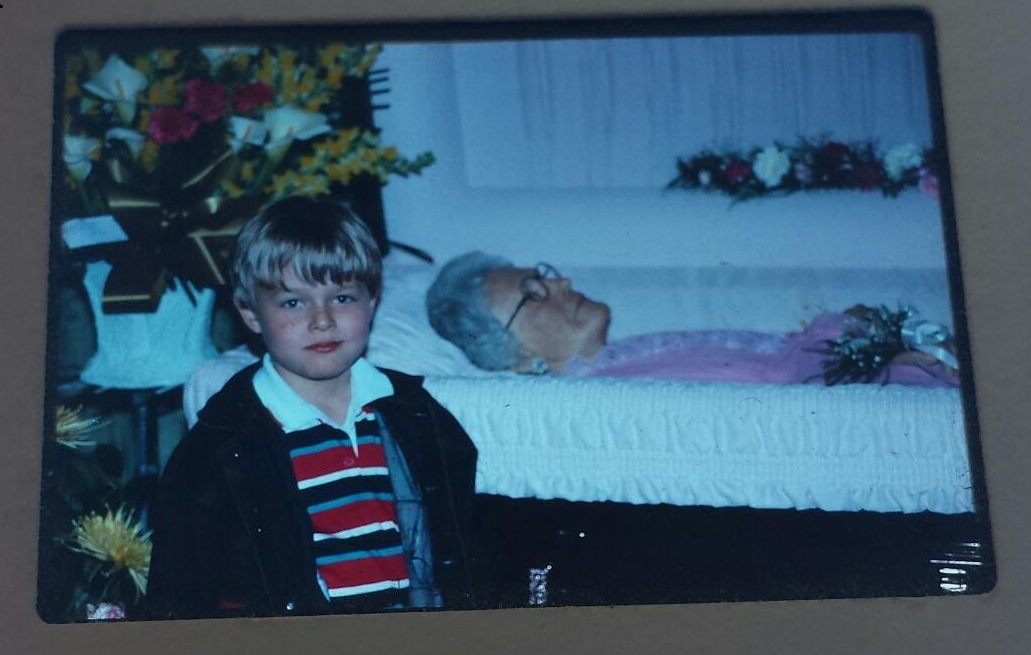Death of a Child
Funeral directors are human too
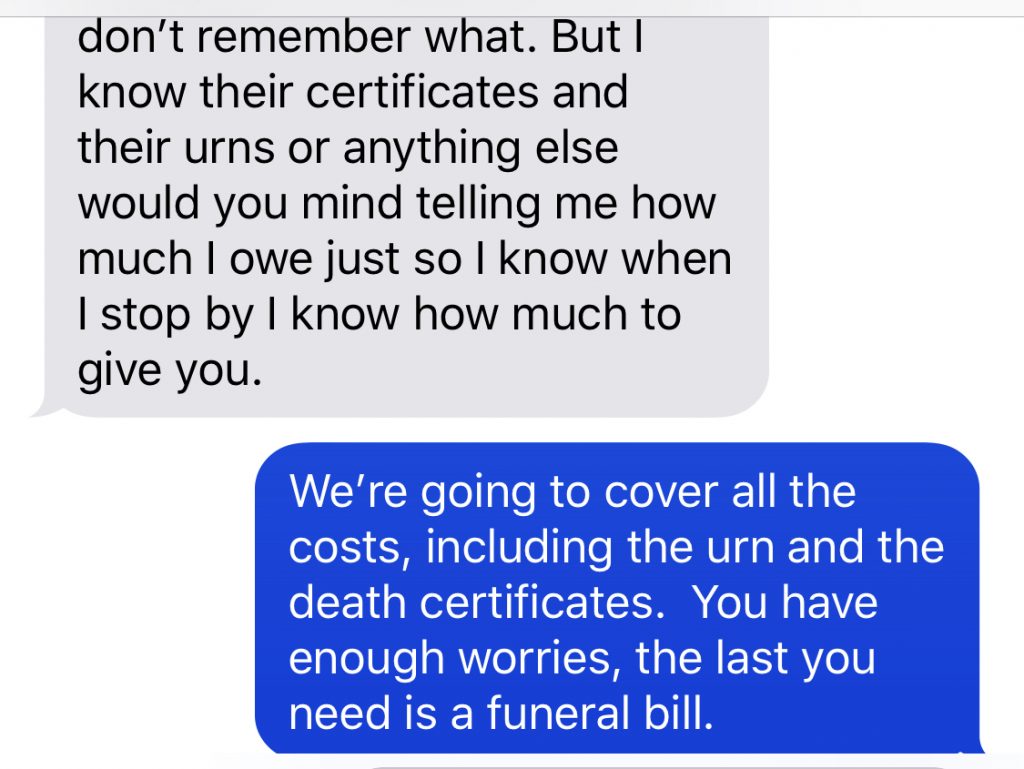
When I work with younger people, I’ll usually give them my cell number so they can text me whenever they want. Texting is just so much less stressful and easier for those of us who grew up with cell phones, and it seems to be a comfort for the families when they know they can reach me via text anytime of the day.
—
This is a text exchange I had with a young mother who birthed stillborn twins. And I don’t share this to brag about my supposed sainthood in providing a free funeral to a bereaved mother. It’s the opposite really. Saintliness implies something extra good, or extra human, or god-like. This act was very much just basic, normal humanity. This is nothing exceptional.
—
Most funeral directors enter and stay in death care because we’ve experienced death and want to use our experience to help others who are experiencing the same. The best of us are grieving people helping grieving people.
—
Every funeral director I know heavily discounts, charges cost, or gives both services and goods for free when their “customer” is a child. It’s not a rule we were taught in funeral school. It’s not unspoken code. It’s just human.
—
And I guess I want you to know that death care workers are not saints, and unlike the many stereotypes, most of us aren’t sinners out to exploit the grieving public. We carry the same grief you do, and we know how far a little goodness and grace can go. So next time you see us in real life, or portrayed as a charlatan on TV, know that we’re neither saint or sinner. We’re very much like you . . . and just like you, when we see a grieving mother, we do what anyone would do by giving the best we can give.
—
#confessionsofafuneraldirector
What It’s Like Embalming a Child Killed by Gun Violence
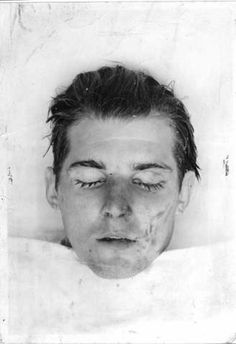
Another school shooting. Ten people died, nine students. This is the 22nd school shooting since the beginning of 2018. The 22nd in just over five months. Let that sink in.
At this point, we’re tired of it, tired of it happening, tired of hearing about it, and tired of the polemics. So maybe a perspective from a funeral director and embalmer can help scratch off the callous. As a forewarning, the content in this post will be disturbing as I present the problems embalmers face with gun wounds.
I was told in funeral school that funeral directors should never, under any circumstances, divulge their political opinions. “Unless you want to lose business,” my prof told us during the fall of 2004 when the Kerry Vs. Bush political battles were headlining, “keep your politics out of death care. Death is about unity, goodwill, and grace. Politics is the exact opposite.”
My prof was right on both accounts. I write in my book how death allows us to transcend our little groups and see the bigger picture, namely that at our core, we may be Democrat or Republican, black or white, gay or straight, but we’re also fundamentally human. Our distinctives are important and should never be minimized, but death gives us a little reprieve from the unneeded tension because it allows us to focus on the things that bind us together, not the things that divide us. Remember 9/11? Remember how we joined together for a month or so, united?
There’s a time for political action, and as I’ve argued before … if grief is the basis for someone’s action, it’s not our job to lecture that activist because — although death can be a classroom — you are NEVER the teacher. Simply: our job as outsiders is to give the grieving a refuge, not put them in a classroom.
While funeral directors rarely get political, that doesn’t mean we don’t get involved. Seventy-one-year-old Ronald Jones, a funeral director from St. Louis was tired of burying kids killed by gun violence, so he finds at-risk youth on the streets and mentors them.
This from an interview with Mr. Jones, a piece that captures what funeral directors experience when a death is by gun violence and the family wants some restoration:
Many times Jones said he’s recognized people that he’s cared about come across his (prep room) table. Nearly seven years ago, he lost someone that he had mentored for years. To this day, Jones still refers to her as one of his “kids.” She was shot 11 times. The bullet wounds left her face mutilated and her skull shattered. When he saw her, Jones didn’t even recognize her.
It took him a few days just to sew up all of the entrance and exit wounds to her face, and he had to use 254 pieces of wire to reconstruct her skull. But as he got closer to making her whole again, things started to become a lot clearer.“When I pulled the face over the skull, I almost fell out on the floor, because I’m recognizing somebody that I know and was dear to me,” Jones said. “So I was mandated to really do my best to bring her back so her baby and aunt who raised her could bring some closure.”
Even though funeral directors are rarely political, we often see the outcome of violence, on both a physical and psychological level. We put together faces, and we attempt to put together the funerals for those faces. Seeing that, touching that, stitching that back together … it does something to a person. I can’t exactly say what it does except that it makes the world’s problems seem so much larger and so much more difficult.
What is it like putting faces back together? Well, it depends.
Either today or tomorrow, the parents and the families of the Santa Fe shooting victims have to make this decision: do we want to have a public viewing for our daughter/son’s body, or not?
As the details of the shooting were coming out, I was particularly struck by the fact that the Santa Fe High School shooter used a handgun and a shotgun. From a number of accounts, it seems the shotgun was his weapon of choice. If so — like an assault rifle as well — a shotgun can create a variety of difficulties for an embalmer trying to restore the child.
If I’m a parent, and a public viewing with embalming/restoration is something I want, I’m hoping that my child was one of the ones killed by a handgun (the shooter used a .38 revolver).
I’ve buried a number of people who died from both shotgun wounds and handgun wounds, and there are three general categories of possibilities for a death by firearm, and some different embalming methods we’d likely have to use for each. One or more of these methods would need to be employed for any child shot in a school shooting:
One: SHOT TO THE HEAD: A handgun will have a small entry point and a slightly larger exit point (assuming it exits the body). A person can shoot themselves point blank in the skull and most of the time, the entry point is a little smaller than a penny. That’s usually a simple job for us to fix. Some basic cosmetology and you can hardly tell where the bullet entered.
A shotgun is completely different. Depending on how close the shooter is to their target, a shotgun spray can disfigure a person’s body, especially the face.
Assuming the family wants to see the body, funeral directors have to be honest with ourselves, “Can we reconstruct the severe trauma? Can we make this look somewhat normal?” If the facial features have been ripped off, usually the answer is “no.”
If the shot was to the back of the head, the skull is likely fragmented, but as long as the spray didn’t exit through the front of the face, we can piece the skull back together, or reconstruct the skull through a variety of options.
Two: BODY SHOT: No biggie. A body shot might damage the arterial system, but it’s unlikely that it’d do any more damage than an autopsy, which is something embalmers encounter on a regular basis. In fact, many states require a full autopsy for any suspected homicide, which would mean the heart — the center for arterial distribution of the embalming fluid — would likely be removed for examination. Multi-point injections are a rather regular occurrence for embalmers. A body shot is the best case scenario if the family wants their child to have a public viewing.
Three: MULTIPLE SHOTS TO HEAD AND BODY: If the head and body have sustained multiple shots, the embalming process is much more complex as we have to raise injection sites on the body for specific locations. In Sandy Hook and Parkland, Flordia, the shooters used assault rifles, which resulted in many of the victims being shot numerous times with higher velocity bullets. Multiple shots from an assault rifle, depending on where they hit and what caliber bullet can cause significant trauma to the head and body, making embalming and restoration much more technical, if not impossible.
If the parents want their child embalmed for a viewing, it falls on us to do our best, and be honest with the family if it’s an impossibility. Some embalmers will be putting countless hours into restoration to make the Santa Fe children look as much like they did before they got shot at their school.
And when all is said and done, the best job they can do might still not be perfect. But this is violence, this is a tragedy and perfect disappeared as soon as the shooter starting pulling the trigger.
At this point, most articles about school shootings end with an action point or a political sound byte. I’m a funeral director and embalmer. I’m not supposed to get political. I can’t tell you how to fix the problem, all I can say is that I wish we never had to fix the fractured faces and bodies of school children. I wish we never had to hear mothers and father weep. I wish we never had to … but we do.
*****
If you like my writing, consider buying my 2017 Nautilus Book Award Gold Winner, Confession of a Funeral Director (click the image to go to the Amazon page):
Listening to the screams of a bereaved mother
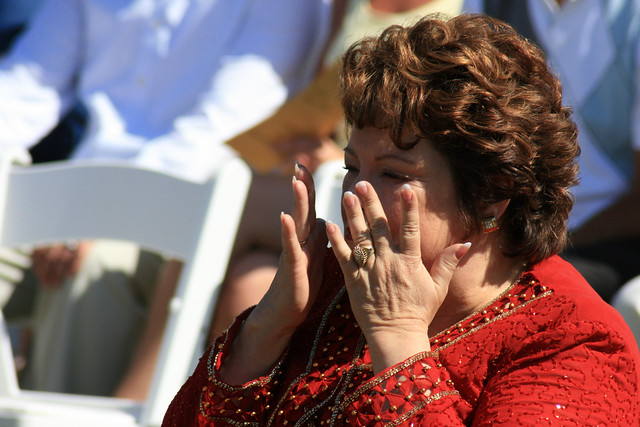
© 2009 Quinn Dombrowski, Flickr | CC-BY-SA | via Wylio
I write this as I’m listening to a mother frantically scream, “That’s my baby!!!” as she views the body of her deceased 24 year old son for the first time since his death. She’s kicking
screaming
stomping
weeping.
I write this as my own therapy … it’s hard to listen to. It must be harder to be her. I can’t imagine.
A Jewish couple who met in school, they were unable to have any kids of their own so they adopted what became their only son, now snatched away from an overdose.
Cold.
Limp.
Unnatural.
Helpless.
My dad comes over to me. We stare at each other for about 30 seconds in silence before he says, “Any mother would do that…” It’s hard to listen to. There’s nothing to say at these times, yet everything wants to be said.
*As with all my posts, circumstances, dates and details have been changed to protect the privacy of those involved.
Brown Box Paradox
I remember the first time I used the brown, one foot wide by two feet long, wood, velvet lined box.
No need for the pomp of a hearse. I used my own car to drive to the hospital.
It looks like an inconspicuous tool box, with dings and dents and stains.
No one knows what I’m doing when I carry the box into the hospital. Nobody is supposed to know.
Nobody wants to know.
On my way back from the hospital I thought about that little brown box.
I thought about how it contained all the greatest hopes and fears of humanity.
I thought how it contained the heights of humanity’s passions,
the height of our joys,
the hope of our future,
and the very miracle of God.
At the same time, this brown box contained the impetus to the deepest questions our soul can ask,
the hardest tears we can cry and the profoundest pain we can feel.
All in this little box.
Usually, when we go to the hospital to pick up a body we bring a stretcher to carry the dead weight of a deceased adult, but on these occasions we bring the brown box to pick up the dead infants.
10 Ways Children Can Be Involved in Funerals
There’s a concept called “disenfranchised grief.” The idea is that there’s certain types of grief relationships that society either downplays as less important or outright ignores. For example, the grief over a pet’s death; the death of an ex-spouse; and — a big one — miscarriages and stillbirths. But perhaps the biggest segment of disenfranchised grievers are children.
Children are disenfranchised for two reasons: their parents haven’t confronted death on a personal level and have become so frightened of it that their natural reaction is to shield their children from the perceived “monster of death.” And two, parents simply repeat the evasive cliches and religious euphemisms they’ve been taught, leaving kids to believe that the deceased is just “sleeping” or “gone to be with the angels.” Cliches act as an unintentional defense mechanism that often keep the children from full death confrontation and thus grief.
I believe that allowing children to be a part of the death conversation and allowing them to be a part of the funeral gives them permission to be a part of the community of grief.
Many of the following suggestions depend on the age, maturity and level of comfort the child has with death. Certainly you never want to force a child to confront death. But if they want a role in the funeral process, here’s ten ideas (many of which were sourced and screen captured from the Confessions of a Funeral Director Facebook community):
1. Presence.
Involvement doesn’t necessarily mean DOING something. Involvement can simply mean BEING present in the context of community. When it comes to death, perhaps the greatest form of involvement is presence. And perhaps the easiest way to determine if your child should or shouldn’t be present is to simply ask them.
As a funeral director, I’ve seen children of all stages at the deathbed of the deceased, many have been brought while their parents made the funeral arrangements, they’ve been present for private viewings, present for public viewings and present for the funeral. It’s okay (maybe even healthy) to involve your children in as much of the funeral process as you want them to see.
2. Burial Involvement.
3. Greetings.
Have them great the family and friends that are coming to the funeral. Usually there’s a stand with a registrar book and memorial cards. I’ve seen young children take charge of getting people to sign in and handing out the memorial cards. It’s a very positive and fulfilling role for the children.
4. Artwork
5. Sing Some Songs.
6. Hand Out Flowers at the Graveside.
Sometimes flowers will be handed out at the graveside as a “final token of remembrance.” It’s a beautiful thing when children hand out the flowers.
7. Junior Pallbearers.
8. Tactile Death Confrontation
9. Eulogize the Deceased.  10. Bedside Care.
10. Bedside Care.
